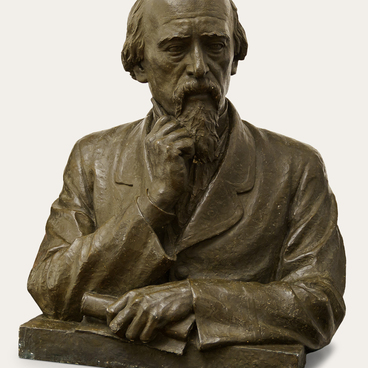The year 1902 became an important stage in the study of Nikolay Nekrasov’s life and work. That year there were a number of events dedicated to the 25th anniversary of the poet’s death.
It was the Society for the Promotion of Public Education and the Dissemination of Useful Knowledge in the Yaroslavl Governorate and personally the poet and journalist Semyon Musin-Pushkin that initiated a set of events to honor Nekrasov’s memory in the Yaroslavl governorate and the city.
Musin-Pushkin was in charge of the Anniversary Commission created in September 1902, which was responsible for organizing the Nekrasov Days in Yaroslavl on December 27–29. The commission members included representatives of the Yaroslavl intelligentsia: the local historian Ilarion Tikhomirov, the journalist Porfiry Mizinov, as well as the poet’s relatives — his brother Fyodor Nekrasov, his niece’s husband Dmitry Belyaev, and his nephew Konstantin Nekrasov.
The commission developed a program to honor the poet’s memory, one of the key projects being the creation of the Nekrasov Museum. Everyone could help create the museum by providing financial assistance or donating exhibits including manuscripts, letters, articles about the poet and other things.
The exhibition was open to the public in the Ancient Repository of the Yaroslavl Governorate Scientific Commission on Ilyinskaya Square in the city of Yaroslavl.
The exhibition consisted of 16 sections, including: “Autographs of N.A. Nekrasov”; “Correspondence of N.A. Nekrasov with Various People”; “Magazines published by N.A. Nekrasov”; “Portraits of N.A. Nekrasov”; “Portraits of N.A. Nekrasov’s Relatives”; “Items Belonging to N.A. Nekrasov and Delivered from the Village of Karabikha by the Late Poet’s Brother F.A. Nekrasov” and so on.
Visitors were mostly interested in the 12th section featuring the images of distinguished writers and artists of Nekrasov’s time as well as the poet’s portraits. The exhibits were donated by the Imperial Public Library, Semyon Musin-Pushkin, the historian Pyotr Kartavov, the writer and local history researcher Leonid Trefolev and many others.
After the exhibition closed, a
number of materials became part of the local archive, a significant part of the
exhibits ended up in the Ancient Repository — the historical museum of the
Yaroslavl Governorate Scientific Archival Commission. Some items were returned
to their owners. Many unique things were lost.


